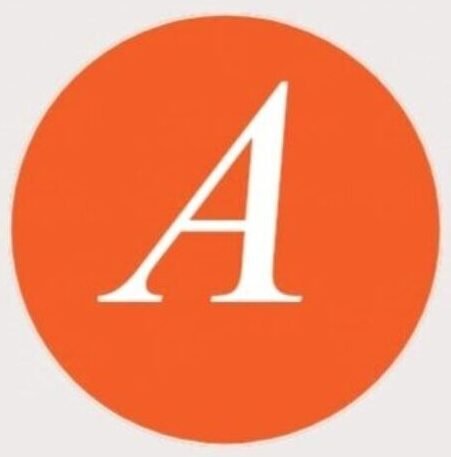Health insurance plans are available in the USA

Health insurance plans are available in the USA
Managing personal health and financial well-being mostly depends on health insurance. It can be challenging to navigate the multitude of health insurance options available in the United States. Each of the numerous forms of health insurance policies provides unique coverage, cost, and advantages. Making a wise decision whether you work for someone else, run your own business, or are looking for personal coverage depends on knowing the health insurance scene. This paper investigates the main forms of health insurance plans available in the USA, their characteristics, and how to select the appropriate one for your circumstances.
1. Employer-sponsored medical insurance
Americans most often get their health insurance from their workplace. Staff members receive employer-sponsored health insurance plans, also known as group health insurance, as a benefit of their employment. These plans, which typically cover the employee and their family, are among the most cost-effective options available to employees, as companies often contribute to the premium costMany companies offer additional benefits such as wellness programs and mental health services, in addition to the standard range of coverage options such as medical, dental, and vision care, which are reflected in their plans. Many times, companies bargain prices with insurance companies, which results in reduced employee premiums. But the particular choices, rates, and coverage might differ significantly between companies, so during open enrollment, you should closely go over the specifics of your plan each year.
2. Plans of Health Maintenance Organisational (HMO) Nature
Among the most often utilised forms of health insurance available in the United States are health maintenance organisation (HMO) plans. The emphasis HMO plans have on a network of healthcare providers defines them. You have to select a primary care physician (PCP) from inside the network when you register in an HMO plan. For all of your healthcare needs, this PCP becomes your primary point of interaction. Usually, you need a reference from your PCP to see a specialist. HMO plans have restrictions, even though their out-of-pocket costs and premiums are usually less than those of other forms of insurance. Except in an emergency, you will probably have to pay the full amount if you require care outside of the HMO network. Less choice of healthcare providers is the trade-off for reduced expenses. HMO plans may be most suitable for those seeking organised, coordinated treatment within a specific network and who don’t mind receiving referrals for specialised services.
3. PPO (Preferred Provider Organisation) Plans
Plans of Preferred Provider Organizations (PPOs) give more freedom than those of HMOs. Under a PPO arrangement, you are able to see any healthcare provider—in or outside of the network—without a reference. Staying with in-network providers is normally more cost-effective, though seeing an out-of-network physician usually means more out-of-pocket expenses. PPOs are perfect for those who seek freedom in selecting healthcare providers and avoid dealing with the referral process. Although they give more choices for healthcare providers, their premiums are often larger than those of HMO policies. Those who have continuous medical demands, require specialized treatment, or routinely visit several doctors or specialists would find PPOs extremely helpful. Many PPO plans also include access to out-of-network care, which is a significant factor if you reside in a rural region with few in-network physicians or travel regularly.
4. Plans for exclusive provider organizations (EPO)
Exclusive Provider Organization (EPO) plans give more freedom in selecting healthcare providers, so they resemble PPO plans. The main distinction, though, is that EPO plans only cover in-network treatment—that is, except in an emergency. If an out-of-network provider treats you, you will bear the full cost of such treatments. For those who are pleased remaining inside a particular network of doctors and hospitals but still want the freedom to choose their providers without the requirement for referrals, EPO plans are usually less expensive than PPO plans. EPO plans can offer a reasonably priced answer for those who reside in places where a large number of doctors and hospitals are easily accessible. You can ensure the inclusion of your preferred doctors and experts by reviewing the plan’s network.
5. POS Plans—Point of Service
Combining elements of HMO and PPO plans, point of service (POS) plans provide a compromise for those looking for less expense and more freedom. Like an HMO, a POS plan calls for you to select a primary care physician (PCP), your gatekeeper for healthcare providers. If you choose to go outside the network for care, as with a PPO, you will incur additional out-of-pocket costs. If you adhere to a Point of Service (POS) plan, your costs will decrease if you stay within the network and obtain a referral from your Primary Care Physician (PCP). If you choose to see an out-of-network physician, you will incur higher co-pays and deductibles, even though you won’t face total limitations. Those who desire some flexibility but yet want the lower expenses associated with having a primary care physician oversee their treatment will find POS plans ideal.
6. High Deductible Health Plans (HDHPs) and Health Savings Accounts (HSAs)
High Deductible Health Plans (HDHPs) are a subset of health insurance policies distinguished by a larger deductible than standard insurance plans. This higher deductible typically results in lower monthly premiums, but there is a trade-off. HDHPs are often combined with Health Savings Accounts (HSAs), which enable you to save pre-tax money for medical bills. For those who are reasonably healthy and do not anticipate needing major medical attention, the combination of an HDHP with an HSA can be a beneficial choice since it lets them save money on premiums while still allowing flexibility to address unanticipated expenses. Additionally advantageous for eligible medical expenses are tax-free withdrawals made possible by HSAs. For those who wish to cut their monthly premiums and are at ease assuming a larger deductible in return for possible tax benefits and more control over their medical expenses, HDHPs are perfect.
7. catastrophic health insurance schemes
Catastrophic health insurance policies are designed to cover a major medical emergency or extreme disease. Although their monthly rates are somewhat modest, these plans come with rather large deductibles. Usually targeted toward younger, healthy people who seek protection against unanticipated, serious medical catastrophes but do not expect to require much regular treatment, catastrophic plans These plans typically provide basic health benefits once the deductible is satisfied, and they also cover preventive services at no cost. Those who cannot afford more thorough coverage and are ready to assume more financial risk in exchange for reduced premiums have options, including catastrophic insurance. However, given the large deductibles, they are not the best option for those who expect regular healthcare or have chronic medical issues.
8. Medicaid
Designed for people and families with low income and limited resources, Medicaid is a government-sponsored health insurance program. Despite each state managing its own Medicaid program, federal sponsorship ensures all programs adhere to specific criteria. Medicaid pays for hospital stays, doctor visits, preventative care, and prescription medicines, among other things. State-by-state Medicaid eligibility varies and usually relies on income level, household size, and other criteria. Medicaid also covers in many states those with disabilities, pregnant women, children, and the elderly. Many low-income people and families depend on Medicaid since, if you qualify for it, it is usually free or low-cost health insurance. To understand the specifics, it’s important to note that state availability and specific benefits may vary, so it’s best to reach out to your state’s Medicaid office.
9. Medicare
Along with certain younger people with disabilities or specific medical problems, such as end-stage renal illness, Medicare is a nationally sponsored health insurance program for persons 65 and older. There are several Medicare parts, each offering varying types of coverage. Part A covers hospital stays; Part B provides outpatient treatment; Part D covers prescription medicines. An alternative to original Medicare, Part C—also known as Medicare Advantage—often offers vision, dental, and hearing coverage, among other extras. For elderly people who require reasonably priced healthcare, Medicare is an essential program; yet, navigating it can be difficult. Those qualified for Medicare have alternatives between Original Medicare (Parts A and B) or a Medicare Advantage Plan, which usually offers extra coverage choices like prescription medicines and wellness programs.
10. Temporary Medical Insurance
Designed to offer temporary coverage for those in transition—between jobs or for other insurance to start—short-term health insurance plans are meant to Typically, these plans exclude coverage for pre-existing diseases, maternity care, and mental health services, offering reduced premiums but limited coverage. For those in need of temporary coverage, short-term health insurance can be a reasonable choice, but it could not provide the same degree of protection as long-term policies. Furthermore, the availability and regulations of short-term plans vary by state, so it is advisable to thoroughly review the details of these plans before registering. Despite their temporary nature, they can effectively bridge coverage gaps.
Conclusion
With so many options meant to fit various requirements and budgets, the United States’ health insurance scene is rather large. There is a plan that will fit your particular healthcare demands, whether your search is for a flexible PPO, a cost-effective HMO, a complete plan offered by your company, or government-funded choices like Medicaid or Medicare. Making wise decisions regarding your health insurance depends on knowing the characteristics, advantages, and expenses of every type of plan. Spend some time assessing your healthcare requirements, contrasting the several plans, and selecting the one that best fits your situation with regard to value and coverage. The correct health insurance plan will help you and your family to access the necessary treatment and guarantee protection against unanticipated medical expenses.






